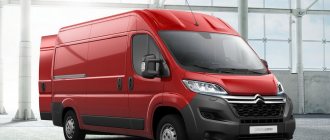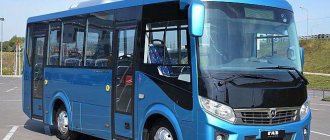What distinguishes Peugeot cars from all others presented on the Russian market today? That's right, first of all, exceptional reliability, due to the highest quality workmanship and strict control at every stage of production. Particularly worth highlighting is the Peugeot Partner model, which has received wide recognition among those who appreciate good cars.
Thanks to competent design solutions, reliability and speed characteristics, the model has won the trust of millions of car enthusiasts around the world. A load capacity of 600 to 800 kg allows the vehicle to be used equally effectively for passenger needs and the transportation of commercial goods. This is a multi-purpose "C" class station wagon that does the job perfectly.
Production history and purpose
Cars similar to the Peugeot Partner have been produced for quite some time. In the USSR, again, there was a similar model - IZH 2715 (“Heel”). However, the French product differed from them in one significant feature. Almost all of its competitors were three-volume with a pronounced operator's cabin (usually a two-seater), an all-metal cargo compartment and an engine compartment. The Peugeot Partner was built according to a different scheme, combining the cargo compartment and the operator's cabin (they were separated only by a mesh). This arrangement turned out to be quite unusual, but it was to the taste of the consumer.
1st generation
The premiere of the first generation Peugeot Partner took place in 1996, when similar models were already on the market. At the same time, the Citroen Berlingo (“twin brother” of the car) debuted. The differences between them were only in the design of the instrument panel and nameplates. In other characteristics, the models copied each other. The Peugeot Partner was assembled at plants in Argentina, Spain and Portugal, and on the Italian market the car was sold under the name Peugeot Ranch.
The French product was a classic compact van with a medium-sized front end and a cargo area. The appearance of the car turned out to be discreet: small elongated headlights, a large hood and a brand logo. The cabin could accommodate up to 5 people, and the rear part could carry up to 3 cubic meters of cargo. It was the versatility and good performance characteristics that became the main advantage of the model.
Peugeot Partner I was produced in 2 modifications:
- 5-seater passenger version;
- cargo variation in the body of a van.
The range of power plants included 1.6- and 2-liter turbodiesels (75 and 90 hp, respectively), 1.4-liter gasoline (75 hp) and 1.6-liter gasoline (109 hp). ) units. Later, a 1.9-liter naturally aspirated diesel engine (69 hp) appeared.
The first generation of Peugeot Partner arrived in Russia a little later and immediately gained great popularity. The model was used by transport organizations and in taxis.
After 6 years of sales, the manufacturer decided to restyling the Peugeot Partner. The updated model debuted in 2002. The changes affected the bumpers, taillights, headlights, grille and interior. The main element of the front part was the clearly defined “kangurin” bumper, painted in body color (on top versions). The headlights became larger and more massive and were combined with lighting devices (turn signals, side lights, high and low beam headlights) into one unit. Large mirror housings and wings added completeness to the look. The “refreshed” version attracted new customers and attracted increased attention.
The restyled version has many progressive devices. The car was equipped with specialized windshield wipers, an upgraded power steering and other innovations. In terms of equipment, the updated Peugeot Partner has become an order of magnitude better than its predecessor. Already in the basic version, the model received airbags for the front passenger and driver.
In 2003, the Peugeot Partner family was replenished with an all-terrain version - the Peugeot Partner Escapade. The car was equipped with plastic arch covers, unpainted bumper corners and protective grilles for taillights and headlights. The all-terrain modification had practically no technical differences from the basic version. The model received only a limited slip differential and increased ground clearance, retaining exclusively front-wheel drive.
The restyling also affected the engine range, which added 1.6- and 2-liter M59 turbocharged units. The most common engines were the 1.4-liter TU3 and the 1.9-liter DW8B, which became one of the most economical and reliable diesel engines in the world. In 2006, the French brand offered a 1.6-liter HDi turbodiesel (75 and 90 hp), which was developed by specialists from Citroen, Peugeot and Ford.
In 2004, the model received minor cosmetic improvements, and after another 4 years it was discontinued. The production of the first generation continued in Turkey, from where the cars were supplied to the markets of other countries.
2nd generation
In 2008, Peugeot introduced the second generation Partner. The car again received a “double” in the form of the Citroen Berlingo MK2. The basic version of Partner acquired the Tepee prefix, cargo modifications received the VU index. It is noteworthy that the first generation, the demand for which remained significant, was not discontinued, giving it the name Peugeot Partner Origin. The complete model left the production line only in 2011. During the same period, deliveries of the vehicle to the Russian market ceased.
The second generation was a completely new model, based on the same base as the Peugeot 308 and Citroen C4. The car has added dimensions, cargo compartment volume and carrying capacity. Peugeot Partner II immediately gained a foothold in the market, since the exterior of the model changed slightly, but the inside became more comfortable and spacious.
The younger unit (1.1 l) left the engine line, to which several engines were added at once. The most interesting was the 2-liter HDi unit with a common rail injection system (power 90 hp). The technical base has also changed. In particular, struts similar to MacPherson struts appeared in the chassis. Instead of a torsion bar rear suspension, an elastic beam on springs appeared (like in passenger cars), which provided a smoother and smoother ride, but had a negative impact on cargo characteristics.
In 2012, Peugeot Partner underwent a light restyling. Changes affected the front bumper and interior. At the same time, the design of the model remained the same. The PSA Peugeot-Citroen concern was unable to carry out global transformations due to financial difficulties.
In 2016, the Peugeot Partner Tepee Electric was shown. The model combines the advantages of the serial variation with the capabilities of an electric vehicle. The car received a huge range (up to 170 km) and an economical engine. The French brand held the world premiere of the model in Geneva. The start of sales of the Partner Tepee Electric version is scheduled for autumn 2022.
In its standard version, the car is in demand among private carriers and customers with large families. The machine is equally effective at transporting small-sized cargo and delivering a family to a vacation spot.
Characteristics of Peugeot Partner / Peugeot Partner
The Peugeot Partner utility vehicle appeared in 1997. Its uniqueness lay in the fact that, despite the dimensions of a golf-class passenger car, it had the carrying capacity of a commercial van, a spacious five-seater interior and a huge trunk. Structurally, the first generation Partner had much in common with the Peugeot 306 model, since both cars were made on the same base. If the cargo modification was simply called Partner, then the passenger version received the Combi prefix. In Italy the car was known as the Peugeot Ranch. The first generation lasted on the assembly line without changes for six years and did not lose its demand.
The appearance of a restyled version of the Peugeot Partner in 2002 only strengthened the position of this car in the market. The changes that have taken place cannot be called cardinal. The body remains the same, as does the overall layout. In fact, the car was simply thoroughly retouched. The updated Partner received large big-eyed headlights, a modernized false radiator grille and a reshaped front wings. The main element of the exterior was the pronounced “kangurin” front bumper, which on expensive versions is painted in body color. Combination headlights with smooth glass combine all front lighting devices: side lights, turn indicators, low and high beam headlights. Enlarged fenders and mirror housings, painted in body color, add completeness to the appearance of the car.
The Peugeot Partner 2002 model year reflects the most progressive achievements of science and technology. For example, the rhythm of the windshield wipers depends on the speed of the car, there is a system for smoothly switching on and off lighting, adaptive power steering, air conditioning, cruise control, etc.
In terms of equipment, the restyled Partner is in many ways superior to its predecessor. The basic version is equipped with airbags for the driver and front passenger. Side airbags are also available on request, plus seat belts with pyrotechnic pretensioners, Isofix mounts for child seats, an additional brake light and a system for automatically interrupting the gasoline supply in the event of an accident.
The Peugeot Partner production range includes cars with front-wheel drive and all-wheel drive. Several versions are offered: 2-seater cargo van with a carrying capacity of 600 or 800 kg, 5-seater Combi cargo-passenger van, 5-seater comfortable CombiSpace cargo-passenger van. The latest example of practicality and functionality. All versions received a new interior during restyling.
The steering wheel rim has become plumper and softer, and a new instrument panel and center console have appeared. It is noteworthy that on more expensive versions the panel has two-tone upholstery.
In the center of the dashboard there is a display of an electronic clock and audio system. It is equipped with a display on which, when starting the engine, information is displayed about the mileage remaining until the next maintenance and the engine oil level.
A comfortable steering wheel of reduced diameter, along with traditional levers, has remote controls for the cruise control system and remote control for the audio system.
The number of places to store various items has increased. In addition to all the pockets and niches found on the previous model, the new Partner has a drawer under the driver's seat, as well as small hiding places at the rear passengers' feet. Plus three drink can holders, a removable ashtray and a 12V socket.
The dimensions of the Peugeot Partner (4.11 x 1.79 x 1.8 m) made it possible to create an excellent interior with five full seats and ample space for luggage. A sliding door and folding front seatbacks provide easy access to the rear seats. But access to the rear seats is provided not only through the sliding door on the right, but also through the front doors. If you need to transport something bulky, you can fold down the rear seats to create a flat-floor luggage compartment with a volume of 2.8 m³. The cargo compartment is separated by a mesh and also has a curtain that hides the contents of the trunk from prying eyes.
The weakest 1.1-liter engine has disappeared from the line of power units. Now, under the hood of the Partner there can be one of the following units: petrol with a volume of 1.4 l or 1.6 l, diesel with a volume of 1.9 l / 69 hp. or 2.0 liter HDI with 90 hp. with Common Rail fuel injection system. The car's impeccable behavior in motion is explained, in particular, by the perfection of its chassis. The front axle is equipped with MacPherson struts and a stabilizer bar. The rear suspension includes two transverse torsion bars, an anti-roll bar and angled shock absorbers.
The top version of Ushuaia differs from the basic version by grilles on the headlights and taillights, increased ground clearance, engine crankcase protection and a limited slip differential in the front wheel drive. The latter turns the Partner into a car that can drive through deep snow and sandy beaches without any problems.
The second generation (in the B9 body) was officially presented in January 2008. The car is significantly different from its predecessor in all respects, both style and technical equipment. The passenger version in the second generation was called Partner Tepee. The second-generation car is based on the so-called universal platform 2 of the PSA concern for small and middle-class cars, which, in particular, formed the basis for the Peugeot 308 and Citroen C4 Picasso passenger models. Compared to the previous generation, it has noticeably increased in size. In the basic version, it is 24 cm longer and 13 cm wider, despite the fact that the wheelbase has grown by only 4 cm. Accordingly, the weight of the car has also increased by several kilograms.
Instead of a torsion bar rear suspension, the car was equipped with a conventional beam with shock absorbers and springs, similar to that installed on passenger cars. As a result, the Partner has become much more comfortable, but the cargo characteristics have decreased. However, this disadvantage is compensated by greater cargo space than the previous generation.
The total volume of the cargo compartment has been increased to 3.3 cubic meters, and the carrying capacity has been increased to 850 kg. Multi-Flex folding front seats when folded allow you to increase the cargo space to 3.7 m³, and the loading length from 1.8 m to 3 m. The manufacturer did not skimp on various types of storage niches, shelves and pockets in the cabin. They are literally everywhere - above the windshield, on the dashboard, in the doors and even under the front seats. Their total capacity, if all options are enabled, is 64.5 liters.
The excellent sound insulation of the car deserves special mention. Peugeot specialists have done a great job, sparing no expense on various types of shielding and noise-absorbing materials in the engine compartment and cabin, as well as special seals in the front doors. In addition, the use of thicker side windows (3.85 mm) also played a role.
The 1.4-liter engine has disappeared from the line of power units. Now the weakest in the range is a 75-horsepower 1.6-liter inline four-cylinder turbodiesel with a common rail fuel injection system. In addition to this, a 90-horsepower diesel engine and a gasoline engine of the same power and volume are also offered for the cargo van.
The passenger version of Tepee, unlike its cargo counterpart, has a longer range of engines. In addition to those mentioned above, this is another 110-horsepower 1.6-liter gasoline engine and a FAP diesel engine of the same power and displacement. And the conditionally “off-road” version of Tepee, shod with 215/55R16 tires, is called Outdoor and is distinguished by increased ground clearance by 10 mm and the presence of crankcase protection.
The model's standard equipment includes anti-lock brakes, brake assist, two front airbags, central locking, power windows and an audio system.
The next restyling of the model was carried out in 2012. Peugeot Partner 2012 model series combines all the best characteristics inherent in earlier releases: spaciousness, efficiency, reliability. In addition, the restyled version is distinguished by excellent driving performance, a comfortable interior and an interesting, recognizable design. The car received a new radiator grille and emblem, front and rear headlights, rear-view mirrors and wheel covers. Compared to previous versions, Partner 2012 has grown in length by as much as 240 mm (up to 4380 mm) and has become wider by 80 mm (up to 1810 mm). The wheelbase has also increased to 2730 mm.
The cargo compartment has also increased. Luggage compartment volume has increased by 51 liters and starts at 675 liters. If you fold the front passenger backrest and the middle one in the second row, you get an excellent compartment for transporting long items up to 2 meters. For the convenience of loading long items, the glass on the rear door was made to open.
The Partner Tepee 2012 version has only two front seats, unlike previous versions. The salon is spacious. The steering wheel is adjustable for both reach and height. A glass roof is available as an option. The list of options also includes the ESP system, which helps to start on hills, six airbags and a tire pressure monitoring system, etc.
The range of engines offers two petrol (90 and 109 hp) volumes of 1.6 liters and three diesel engines (75, 90, 110 hp). All engines are paired with a five-speed manual transmission. The power units are distinguished by excellent economic performance (average fuel consumption in the combined cycle is within 8 liters) and modest dynamic characteristics.
The Peugeot Partner is perfect as a vehicle for small businesses.
Specifications (second generation)
Dimensions:
- length – 4135 mm;
- width – 1820 mm;
- height – 1725 mm;
- wheelbase – 2695 mm;
- front track – 1420 mm;
- rear track – 1440 mm;
- ground clearance - 140 mm.
The weight of the model depends on the modification and ranges from 1197-1780 kg. Load capacity is 583 kg.
Dynamic characteristics:
- maximum speed – 160 km/h;
- acceleration time to 100 km/h – 15.6 seconds.
Number of doors - 3 or 5, number of seats - 5. Trunk volume is no more than 675 liters, with seats folded - no more than 3000 liters.
Fuel consumption (diesel):
- extra-urban cycle – 5 l/100 km;
- combined cycle - 5.8 l/100 km;
- urban cycle - 7.3 l/100 km.
Fuel consumption (gasoline):
- extra-urban cycle - 7.3 l/100 km;
- combined cycle - 8.5 l/100 km;
- urban cycle - 10 l/100 km.
Fuel tank capacity – 55 l.
Engine
The range of engines from Peugeot Partner Origin is quite wide. Petrol options include 1.1- and 1.4-liter units. Their power is not always enough for a car. The 1.6-liter gasoline engine (4 cylinders, 109 hp) seems more interesting, but the production of modifications equipped with it ended in 2001. Gasoline engines are more reliable and less demanding on fuel quality. Most often, problems arise with attachments (sensors) and are caused by high mileage.
Motor characteristics:
- 1.1-liter unit: rated power – 60 hp, maximum torque – 88 Nm;
- 1.4-liter unit: rated power – 75 hp, maximum torque – 120 Nm;
- 1.6-liter unit: rated power – 109 hp, maximum torque – 147 Nm.
The second generation received modernized power plants. The company abandoned the 1.1-liter engine. It was replaced by 1.6-liter engines with 98 and 120 hp.
Diesel units are valued for their efficiency (especially in Europe). The outdated atmospheric version is considered the most reliable. In 2000, the French product received a 2-liter in-line HDi engine with a common rail system, which, with minor upgrades, has reached the present day. In terms of reliability, it is not inferior to its predecessors, and in terms of efficiency, it surpasses them. The operating life of the 2-liter HDi engine is longer than that of the 1.6-liter highly accelerated HDi unit. At the same time, both engines experience problems with the turbocharger, EGR valve, injectors and throttle valve at high mileage. Oil leaks often occur. The 1.6-litre HDi engine is currently not available.
again, the line of diesel units includes a 1.9-liter engine, but it is less common.
Motor characteristics:
- 1.9-liter unit: rated power – 69 hp, maximum torque – 125 Nm;
- 2-liter turbocharged unit: rated power – 90 hp, maximum torque – 205 Nm.
Model history
The Peugeot Partner was introduced in 1996, at the same time as its sister Citroen Berlingo. In technical terms, the cars are almost completely identical. In 1997, mass deliveries to the market began with naturally aspirated engines: gasoline 1.1 l/60 hp, 1.4 l/75 hp, 1.8/90 hp. and diesel 1.8 D/60 hp. and 1.9 D/68-69 hp. In 2000, a new turbodiesel 2.0 HDi 90 hp appeared in the range. with common rail injection system. In 2001, the gasoline 1.8 was replaced with a new 16-valve engine 1.6 l/109 hp.
In 2003, restyling was carried out. Shortly before the generation change, in 2006, they offered a new 1.6 HDi/75 and 90 hp turbodiesel, which Peugeot, Citroen and Ford worked on. In 2008, production of the first generation model ended. However, the first Partner continued to be assembled in Turkey, from where the cars were supplied to other markets.
Device
Peugeot Partner was positioned as a multifunctional car for active people who need a car capable of transporting a large amount of cargo and several people. The design of the French product was developed with these priorities in mind.
The Peugeot Partner received a front-wheel drive layout with a 4 by 2 wheel arrangement. The engine of the car was located in the front. The chassis was considered one of the strengths of the car. An independent suspension of the Pseudo McPherson type was installed at the front, and a transverse beam at the rear. Road unevenness when driving the Peugeot Partner was perceived quite mildly. This solution turned out to be successful in terms of maintainability. The high ground clearance made it possible to move around both the city and the countryside.
Initially, the model was equipped exclusively with a 5-speed gearbox. Later the number of transmissions increased. For the second generation, 3 gearbox variations were offered:
- 5-speed manual gearbox;
- 6-speed manual gearbox;
- 6-band automatic transmission.
Steering type: rack and pinion. In the basic modification, the car received power steering.
Disc brakes were installed on the front wheels of the Peugeot Partner (for all versions), and drum brakes on the rear wheels. Thanks to this, even in emergency situations, the braking distance was quite small.
The wheels in the basic version were equipped with 205/65R15H tires.
The Peugeot Partner (especially in the second generation) was equipped with many safety systems to protect passengers and the driver. Already at the minimum price, the car received an anti-lock braking system (ABS) and belts with pretensioners. functionally available:
- HILL ASSIST system, which helps to start moving on a slope;
- automatic braking system;
- adaptive fog lights, which provided illumination of the inner turning radius at speeds of up to 40 km/h;
- stabilization system that returns the car to its previous trajectory;
- GRIP CONTROL system that distributes torque on the axle. It provided maximum grip and improved the vehicle’s maneuverability regardless of the road surface;
- Cruise control;
- rear view camera, automatically activated when reversing;
- parking sensors;
- ISOFIX child anchorages.
The interior of the first and second generation Peugeot Partner was practically no different. This is due to the fact that before the appearance of the new product, the model underwent a restyling procedure, and its internal content became more relevant.
The front console of the Peugeot Partner II turned out to be more recent due to the installation of a 7-inch sensor, which is a key element of the entertainment system. It was used to control the telephone, navigation and on-board computer.
The driver's seat has been made more comfortable. The controls were located in the right areas and did not interfere with driving. The only issue was related to the poor location of the seat heating button. It was located on the side of the chair and overlapped when the belt was fastened. This flaw was not considered a serious drawback.
We chose good finishing materials for the interior. I was also pleased with the fit of the elements, which did not raise any complaints. The front seats were ergonomic and comfortable and received lateral support, making it easier to travel long distances. The rear seats, which can accommodate 3 adults, were again quite comfortable. A functional air conditioning system was offered for the rear row (located under the roof).
The number of various shelves, boxes and drawers in the Peugeot Partner has always been very large. When traveling, the trunk could hold up to 675 liters of cargo, and with the seats folded – up to 3000 liters. At the same time, the rear seats could be used as small chairs during outdoor recreation. In the cargo version, there was no back row, so the maximum trunk volume was by default. The car had 5 seats.
Inside, the Peugeot Partner turned out to be very attractive. The light interior trim, interesting front panel, large number of shelves and enormous transformation possibilities attracted the attention of family clients and commercial companies.
The Peugeot Partner is a practical and attractive car that is perfect for everyday use and for business.
Design
The 2022 Peugeot Partner Tipi is a five-seater, front-wheel drive MPV created on the PSA PF 2 platform. The new generation of minivans has increased in size, but the weight of the vehicle has not increased.
In the exterior itself, changes were made to a minimum: the radiator grille and daytime running lighting were modified, and two new shades were added to the car’s color scheme – Moka Gray (dark coffee) and Artense Gray (dark gray, almost black). In the Peugeot Partner Tepee Outdoor 2022 version, the front bumper has become more massive and stronger (less susceptible to deformation, chips, etc.).
Exterior
Externally, the compact van has remained almost the same appearance and is still recognizable - it has only increased in size. Dimensions of Peugeot Partner Tipi:
VAN: MINIVVAN:
Length – 4,380 mm; – 4,384 mm.
Width – 1,810 mm. – 1,810 mm.
Height – 1,800 mm. – 1,862 mm.
Interior
Minor changes have also been made in the interior of the Peugeot Partner Tipi: the finish and color scheme have been updated, a new multimedia system with a rearview camera has been installed, the touch screen display has been enlarged, and navigation options have been enlarged. It is also possible to start and stop the engine with a button, using the Stop&Start auxiliary system.
The driver's seat is high, which, together with the exterior mirrors, provides good visibility. The new 7-seater Peugeot Partner Tepee is spacious and comfortable. The volume of the cargo compartment is 654 liters; above it there is a box for storing various necessary items. The back row of seats is transformable. Access to the cargo compartment is possible both from the outside and from the inside.
A feature of the interior of the Peugeot Partner Tepee 2022 in the Outdoor version is a panoramic, four-section roof - Zenith. The equipment also includes many niches and compartments for things. Another feature of the model is that the rear doors are sliding, and the entrance to the cargo compartment can be either hinged (of two sections) or folding.
Price of new and used Peugeot Partner
On the Russian market, Peugeot Partner is offered in Outdoor and Active trim levels. Basic equipment of the car includes ABS, EBD, AFU systems, central locking, radio preparation, engine protection, halogen headlights, 2 airbags, fabric trim, R15 wheels and front electric windows.
The minimum cost of a Peugeot Partner (cargo version) starts from 962,000 rubles (price taking into account the discount under the trade-in program). Without specialized offers, you will have to pay about 1,032-1,040 million rubles for a car. The Tepee version will cost more – from 1.13 million rubles.
The Outdoor package additionally included an advanced multimedia system with Mirror Link technology and separate rear seats. The cost of such a car starts from 1.10 million rubles.
There are quite a lot of used Peugeot Partners on the Russian market. Model cost:
- 1998-2000 – 100-200 thousand rubles;
- 2007-2009 – 310-400 thousand rubles;
- 2013-2015 – 490-800 thousand rubles.
Purchase criteria for a used Peugeot Partner
When purchasing a used Peugeot Partner, you should pay special attention to the following elements:
- rear axle. The most common problems occur with wheel bearings;
- stabilizer bushings and struts on the front axle;
- support bearings of the front struts;
- power steering;
- operation of electrical equipment
- sliding door opening mechanisms.
Typical problems and malfunctions
The high-quality assembly of the Peugeot Partner makes it one of the most reliable in its class, but only with regular maintenance in accordance with the manufacturer's recommendations.
Among the weak points of the M49 and M59 are the rear needle bearings of the levers, which need to be changed on average every 30 thousand km. mileage If dirt and sand get into the sliding door mechanism, problems may arise with their opening/closing.
In rare cases, malfunctions of electrical equipment and power steering occur.











